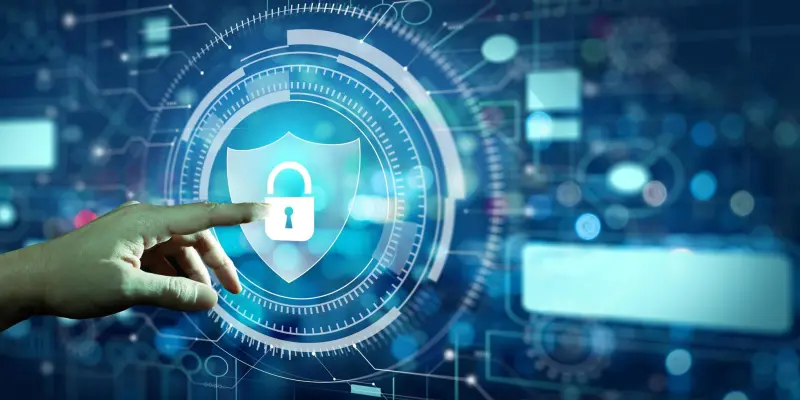The rapidly evolving technological landscape in today’s digital age necessitates the modernization and securing of legacy systems, a challenge that feels increasingly pressing. These archaic, yet mission-critical technologies often operate on outdated architectures, leaving them susceptible to cyber threats and operational inefficiencies. Despite their reliable core functionality, businesses relying on these systems often face vulnerabilities and compliance risks. As enterprises embrace digital transformation, the need to maintain business continuity while avoiding excessive costs is paramount. Solutions must be sought to address these multifaceted difficulties. This discussion delves into the inherent risks posed by legacy systems and proposes strategies for modernization and security enhancement.
Understanding Legacy System Vulnerabilities
Cybersecurity Threats Tracing Back to Outdated Architectures
Legacy systems were developed during a period characterized by less sophisticated cyber threats, contributing to their inherent vulnerabilities. These systems typically lack advanced security measures, such as encryption and multi-factor authentication, which are integral in contemporary IT infrastructures. Operating on unsupported systems, they are often plagued by unpatched vulnerabilities, exposing organizations to risks including data breaches and ransomware attacks. Furthermore, they struggle with compatibility issues with current security tools, unable to generate effective security logs or alerts for incident detection and response. This inability leaves sensitive data at risk and organizations vulnerable to potential financial and reputational damage.
Operational Inefficiencies Hindering Business Growth
In addition to cybersecurity risks, legacy systems often pose operational inefficiencies that hinder business growth. Outdated architecture can result in incompatible interfaces with modern technologies, preventing seamless integration and slowing processes across departments. The rigidity of these systems impedes innovation and agility necessary to respond to market demands swiftly. Maintenance becomes more expensive and labor-intensive as technical expertise on such outmoded systems dwindles. Supporting business growth demands systems that can evolve to align with a dynamic market, making transformation imperative. Bridging the gap between legacy structure and digital readiness is a complex, yet essential undertaking for business development.
Strategies for Enhanced Security and Modernization
Implementing Security Measures
To address these vulnerabilities effectively, businesses need to employ robust security practices. Regular patching and updates serve as fundamental defenses against threats. Although legacy systems may sporadically receive vendor updates, proactive monitoring and timely application are crucial. System wrappers and middleware can facilitate secure interfacing with modern networks, providing encryption, authentication, and intrusion detection layers. By segmenting networks, organizations can confine legacy applications to dedicated zones with strict access controls, minimizing attackers’ lateral movements to modern assets. Additionally, implementing strong authentication with multi-factor authentication and clear access controls allows companies to regulate system access and minimize risks of unauthorized entry.
Initiating Modernization Roadmaps
While securing legacy systems is vital, planning for long-term modernization is equally important. Incremental modernization involves gradually refactoring or re-platforming components, introducing new functionalities over manageable cycles to reduce disruption. This approach aligns evolving business needs with system capabilities and ensures smoother transitions. Alternatively, a significant bang replacement requires switching completely from old to new systems, offering rapid transformation albeit with potential operational challenges. Opting for incremental modernization often provides better stability during transitions, especially when supported by agile methodologies and automated testing.
The Role of AI and Expert Endorsement
Leveraging AI for Efficient Integration
Artificial Intelligence plays a pivotal role in facilitating the transition from legacy systems to modernized infrastructures. By automating repetitive tasks, AI-driven tools significantly enhance the migration process. They pinpoint inefficiencies and optimize integration paths, enabling businesses to ease the transformation seamlessly. Leveraging AI’s capabilities fosters adaptable and efficient modern systems while reducing human error and operational downtime. Thorough utilization of AI-driven solutions can catalyze the modernization journey, making adaptation less daunting and more streamlined in today’s fast-paced technological environment.
Insights from Industry Experts
Industry experts generally recommend incremental modernization strategies for legacy systems, citing reduced disruption and enhanced business alignment as key benefits. With agile methodologies promoting adaptability and automated testing ensuring system robustness, businesses can navigate modernization with confidence. Experts underline the importance of synthesizing technological advancements with organizational growth, stressing that transformation must cater to evolving market demands without hindering operational continuity. Insights from these professionals contribute significantly to understanding the multifaceted dimensions of legacy modernization, offering valuable perspectives for businesses on the cusp of transition.
Balancing Security and Growth
Long-term Strategies for System Modernization
Modernizing legacy systems requires balancing operational continuity with addressing vulnerabilities. Regular updates, encryption, segmentation, and proper access control integration are vital. While short-term security measures enhance protection, formulating long-term replacement plans ensures reduced risk exposure. Comprehensive modernization roadmaps align business continuity with adaptive growth strategies, enhancing security and positioning enterprises for future development. Such strategies highlight effective transformation paths while shielding critical assets during the transition. In achieving this balance, enterprises can securely navigate modernization and support sustained growth in a competitive digital realm.
Preparing for Future Challenges
Legacy systems were built in a different era, one marked by less advanced cyber threats, which inherently makes them more vulnerable today. These older systems usually don’t include the sophisticated security features that are now fundamental to modern IT infrastructure, like encryption and multi-factor authentication. They often run on outdated systems that are no longer supported, making them rich targets for hackers due to unpatched security gaps that can lead to data breaches or ransomware attacks. Moreover, these systems often face compatibility issues with new security tools, which hampers their ability to produce effective security logs and alerts necessary for proper incident detection and response. This deficiency not only puts sensitive information at risk but also exposes organizations to the possibility of financial losses and damage to their reputation. As technology continues to evolve rapidly, updating or replacing these legacy systems becomes crucial to safeguarding against an increasingly sophisticated landscape of cyber threats.

